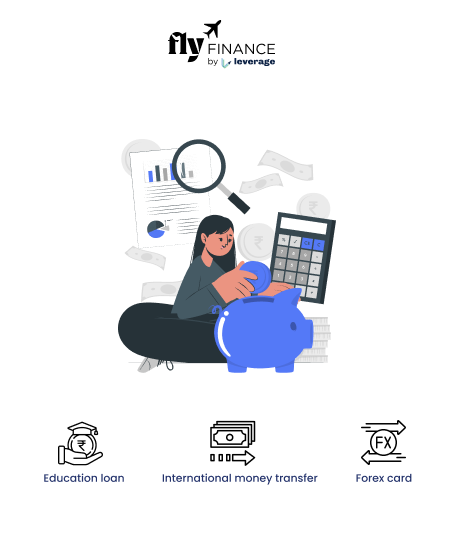What is remittance? It refers to the transfer of money by individuals working abroad to their home country, often to support their families. Remittances play a crucial role in the economies of developing nations, where many families depend on funds sent by relatives working overseas.
In this comprehensive guide, we will explore what is remittance, remittance meaning, what are the different types of international remittances, and what are the modes by which money can be transferred.
Table of contents
What is Remittance Meaning?
The process of sending money from abroad to your family or any individual can be called a remittance. In simple terms, remittances mean the transfer of funds. In simple terms, remittance meaning refers to the act of sending funds, usually to support family members or friends. The word “remittance” is derived from the verb “remit,” which means “to send back.”
You can send a remittance from abroad by using electronic fund transfer systems such as wire transfer, or through transfer service providers like Western Union, Banks etc. Mostly, there is a remittance fee charged by the platform or bank you are using to make domestic or international transfers.
Also Read: Do you know how much commissions and charges you have to pay while making money transfers? Check this blog and know all about Cheapest International Money Transfer
Types of Remittance
Remittances can be categorized based on the method of transfer destination, recipient and purpose. However, there are mostly two types of remittances- Inward and Outward Remittances. Let’s understand the type of remittances one by one.
Inward Remittance Meaning
Inward remittance meaning refers to the transfer of money from a foreign location to a recipient within the home country. For example, when an individual in India receives money from someone overseas, it is considered an inward remittance.
This inward remittance could include funds received by family members, friends, or even business transactions originating from abroad.
Outward Remittance meaning
Outward remittance meaning refers to the transfer of money from an individual’s home country to a foreign destination. For example, when an individual in India sends money to someone living abroad or conducts financial transactions outside the country, it is categorised as an outward remittance.
This outward remittance can be done for various purposes, such as supporting students studying overseas, investing in foreign ventures, or covering expenses related to international travel.
Modes of Remittances
Now that you know about the remittances meaning and types of remittances, let’s know about what are the modes of remittances. Well, there are various ways and methods through which remittances can be made. These modes of remittance include bank transfers, online payment platforms, and money transfer services like Western Union.
Here’s a detailed explanation of the modes of remittances-
Bank Transfers for Sending Remittances
Bank transfers are one of the most common methods for sending remittances. It involves transferring money directly from one bank account to another through bank transfer, EFT, international wire transfer etc. It can be done through online banking platforms, mobile banking apps, or by visiting a bank branch.
Online Payment Platforms for Sending Remittances
Online payment platforms such as PayPal, Venmo, and TransferWise allow users to send remittances electronically to individuals or businesses. These services allow individuals or businesses to transfer funds using their bank accounts, credit cards, or other payment sources.
Money Transfer Services
Money transfer services like Western Union, MoneyGram, and Ria Financial Services offer a reliable way to send remittances internationally. Transactions can be initiated online, via mobile apps, or at physical agent locations, providing flexibility for both senders and recipients.
Prepaid Cards for Sending Remittances
Certain prepaid cards can be used for sending remittance, allowing users to load funds onto the card and then transfer them to recipients. These cards may offer additional features such as ATM withdrawals or online purchases.
Process of Sending Remittances
Sending a remittance typically involves three key steps: initiating the transfer, processing the payment, and receiving the funds. Depending on the method selected, the process can vary in terms of speed, cost, and convenience, allowing individuals to choose the best option to suit their needs.
Payments can be made in various ways, including cash, bank transfers, or digital methods such as debit cards or online transactions. Below is a detailed breakdown of the complete process of sending remittances:
- Step 1: Sender Initiates Payment: Migrant workers pay the remittance to a sending agent using various methods (cash, debit card, bank transfer, etc.).
- Step 2: Sending Agent Transfers Funds: The agent communicates with the receiving agent in the recipient’s country to deliver the remittance.
- Step 3: Payment to Beneficiary: The recipient receives the funds in their local currency from the paying agent.
- Transaction Costs: Fees include the charge by the sending agent and currency conversion fees; smaller remittances often incur higher fees (7–20%).
- Impact on Low-Income Migrants: High transaction fees disproportionately affect migrants who send smaller amounts, making it harder for families to benefit fully.
How to Send Remittance?
There are multiple ways to make remittances online. You can transfer money through bank transfer, EFT, wire transfer etc. Sending remittance to India involves several steps, and the process can vary depending on the method you choose. Let’s have a look at the common methods:
- Select a Remittance Method: Choose a suitable method for sending money to India. Common options include bank transfers, online money transfer platforms, etc.
- Verify Identification: Ensure you have all the necessary identification documents required by the chosen remittance service. This may include your passport, proof of address, and other relevant documents.
- Provide Recipient Information: Enter all the details properly of the recipient in India, including their full name, address, and bank account information. Double-check this information to avoid any errors.
- Confirm Exchange Rates and Fees: Be aware of the exchange rates and fees associated with the bank transfer. Banks may charge fees for international transfers, and exchange rates can impact the final amount received by the recipient.
Purpose of Remittance
Remittances can be sent for various purposes, such as gifts, donations, family support, business ventures, or capital infusion. Transfers made to family members or for business-related reasons are all considered remittances. Below are the details of the different types of remittances:
- Personal Remittance: This type of remittance is sent to support family members, cover educational costs, medical expenses, or fulfill other personal needs. For instance, it is common for Indian expatriates to regularly send money to their families back home, ensuring their well-being.
- Example: Sunil, the sole breadwinner of his family, works in Canada at a hotel while his family resides in India. Every month, Sunil transfers INR 25,000 to his father’s account. This transfer qualifies as a personal remittance.
- Business Remittance: Expatriate entrepreneurs or investors may send money for business-related purposes, such as capital infusion, business expansion, or funding projects. These remittances play a crucial role in connecting global financial resources with local economic opportunities.
- Example: An Indian entrepreneur working abroad may send funds to India to invest in a startup or expand an existing business.
- Gifts and Donations: Many Indians living overseas send monetary gifts or donations to support community projects, religious institutions, or charitable causes in their home country. These transfers can also be sent as personal gifts to family members, such as brothers, sisters, or cousins.
- Example: An individual abroad may send a monetary gift to their sibling in India for a special occasion or contribute to a charitable initiative in their hometown.
Also Read: Worried about taxes on Remittance? Check this blog and learn all about TCS on Foreign Exchange and Remittance
TCS on Remittance Transaction
The government of India have framed some laws regarding the TCS on all remittance transactions. The Reserve Bank of India keeps revising the laws as per the economic conditions and the guidelines of the government. All the transfer remittances, travel and investments under the LRS are subject to TCS (Tax Collected at Source).
- As per the last update, from July 1, 2023, 20% TCS will be applicable on all remittances, except those which are being made for education purposes or medical grounds.
- If the total amount for medical and educational purpose transactions exceeds INR 7 lakhs, a TCS of 5% will be applicable.
- The deductions can be claimed at the time of filing taxes as an income tax refund or as a credit while calculating the advance taxes.
- Any payment made with an international credit card or debit card up to an amount of INR 7 lakh in a financial year will be excluded from the LRS limit and TCS will not be applicable on such transactions.
How to Choose the Best Remittance Service for Your Needs?
Choosing the right remittance service is crucial for students, as it impacts the cost, speed, and security of the transfer. When selecting a service, consider the fees and exchange rates, as these can vary significantly between providers. Some services may offer lower fees but less favorable exchange rates, while others may provide more favorable rates but at a higher cost.
When choosing a remittance service, students should compare the following factors:
- Transfer Fees: Look for services with low or transparent fees.
- Exchange Rates: Choose services that offer competitive exchange rates to maximize the amount received.
- Transfer Speed: Select services that process transfers quickly, especially for urgent payments.
- Security Features: Make sure the service uses encryption and secure payment methods to protect your money.
Benefits of Using Online Remittance Services
Online remittance services provide students with a fast, convenient, and cost-effective way to send money. With just an internet connection, students can send funds from the comfort of their dorm rooms or apartments without having to visit a physical location.
Online remittance services provide a range of benefits that are particularly useful for students:
- Convenience: Send money from anywhere, at any time, using a smartphone or computer.
- Lower Fees: Many online services have lower fees compared to banks or money transfer operators.
- Faster Transfers: Instant or same-day transfers are available on many platforms.
- Transparency: Track your transactions in real-time and receive notifications.
How to Avoid Scams When Sending Remittances?
Unfortunately, remittance services are sometimes targeted by scammers looking to exploit unsuspecting senders. Students should be cautious when transferring money to ensure they are not falling victim to fraud. One common scam involves fraudsters pretending to be family members or friends in distress and asking for urgent financial assistance.
Scams in the remittance industry are unfortunately common, but students can take steps to protect themselves in the following ways:
- Verify the Recipient: Always confirm the recipient’s details before sending money.
- Be Cautious of Unsolicited Requests: Don’t send money to someone who contacts you out of the blue.
- Choose Reputable Services: Use trusted, established platforms with positive reviews.
FAQs on Remittance Meaning
Remittance refers to the process of sending money, typically from an individual living abroad, to their family or friends in their home country. It is often done to provide financial support or for other personal reasons.
You can transfer money through any online mode like direct bank transfer, Wire transfer, or fund transfer through service providers like Western Union etc.
Countries that get the most remittances from India are Bangladesh, China, Nepal, Sri Lanka and the United States of America (USA).
The two main types of remittances are Inward Remittance, which involves money being sent to a home country from abroad, and Outward Remittance, which refers to sending money from a home country to another country.
According to the Liberalised Remittance Scheme (LRS) of the RBI, Indian residents can remit a maximum of USD 250,000 in a financial year to individuals living overseas. The maximum limit includes both capital and current account transactions.
These modes of remittance include bank transfers through EFT or international wire transfers, online payment platforms, and money transfer services like Western Union.
Remittances can be sent through various methods, including bank transfers, online payment platforms, money transfer services (like Western Union), and prepaid cards.
Fees for sending remittances can include transaction charges by the platform or bank, currency conversion fees, and sometimes additional costs for faster services. Smaller transfers may incur higher fees.
Inward remittance refers to the transfer of funds from a foreign country to an individual in the recipient’s home country. For example, a person in India receiving money from someone overseas is receiving an inward remittance.
Outward remittance is the process of sending money from one’s home country to a foreign country. It can be done for purposes like supporting students abroad, business investments, or covering travel expenses.
Remittances typically involve cross-border transactions, provide financial support to families, and contribute to economic stability in the receiving countries.
Sending remittances usually involves three steps: the sender initiates the payment, the sending agent processes the payment, and the recipient receives the funds in their local currency.
When choosing a remittance service, consider factors like transfer fees, exchange rates, transfer speed, and security features. Compare different services to find the one that best suits your needs.
One major risk is falling for scams, where fraudsters may impersonate family members or friends. To avoid this, always verify recipient details and use reputable remittance services.
Remittance plays a very important role in the lives of Indians living abroad. It helps to bridge the geographical gap and ensure the well-being of their family. As technology continues to develop, the scope of remittance is likely to see further advancements, providing even more convenient modes of money transfer.
To know more about the loan application process, the best international bank accounts for students, forex and banking experience for global students or international money transfers, reach out to our experts at 1800572126 to help ease your study abroad experience.
| Related Blogs |
| Exchange Currency Legally in New York: Check Top Service Providers |
| American Express Forex Cards |
| Terms Related to International Money Transfer |
Follow Us on Social Media





























